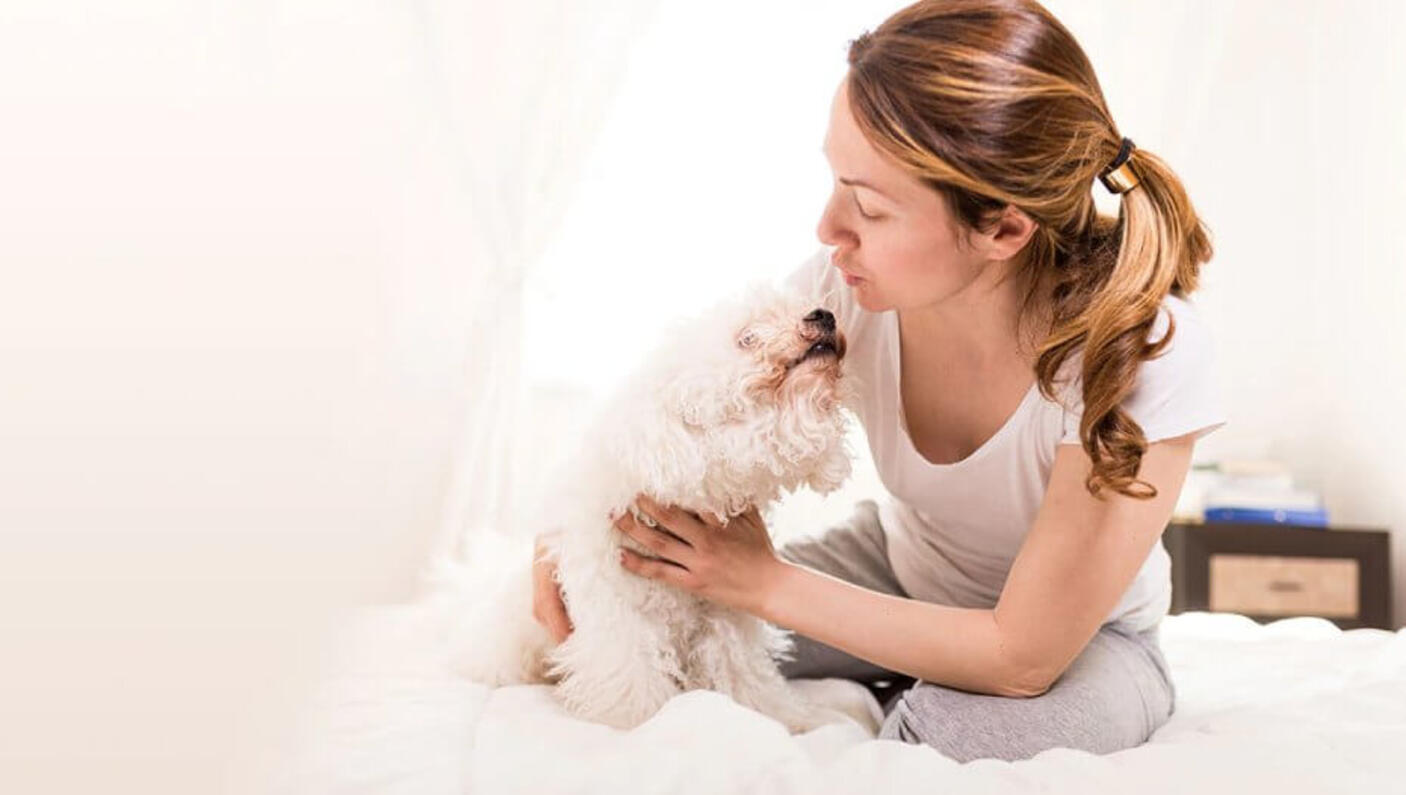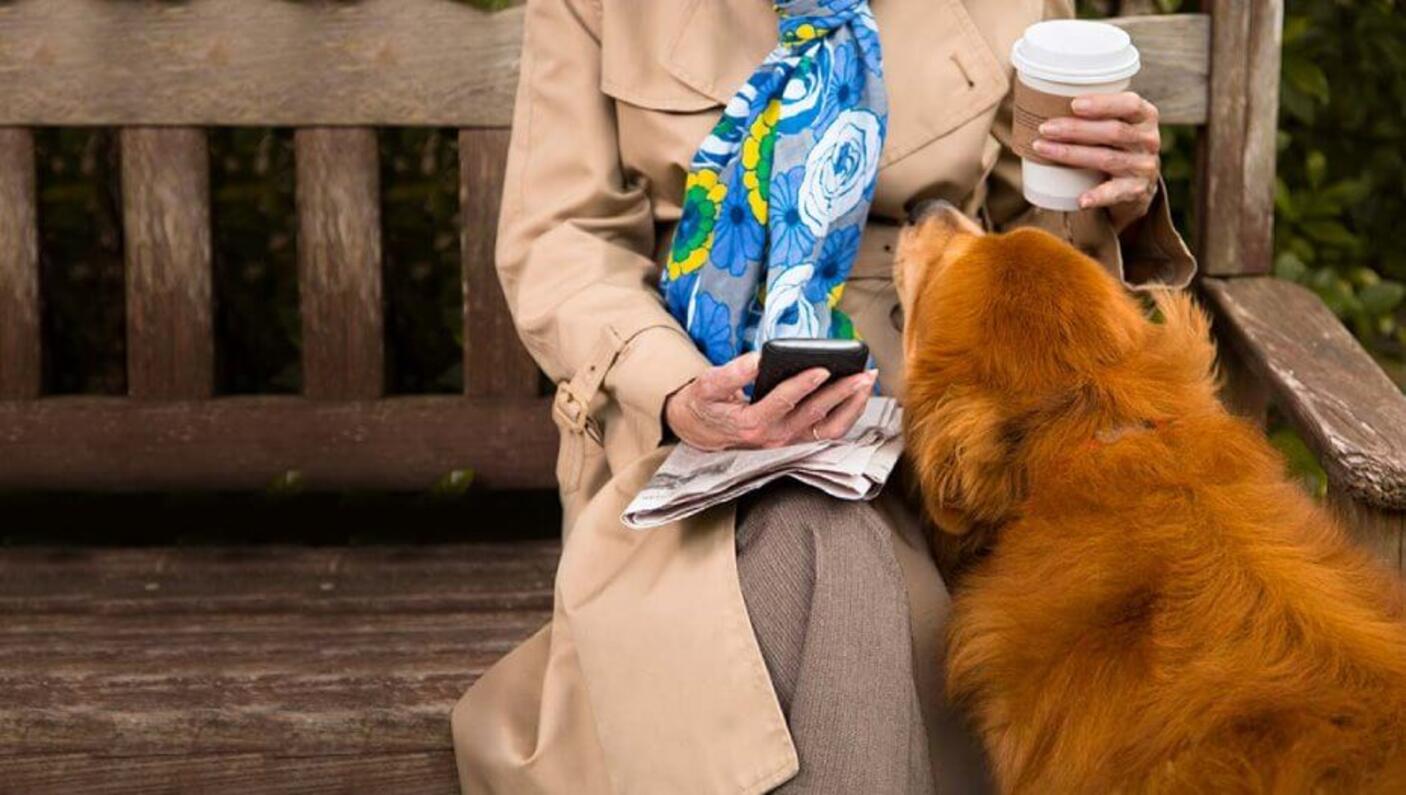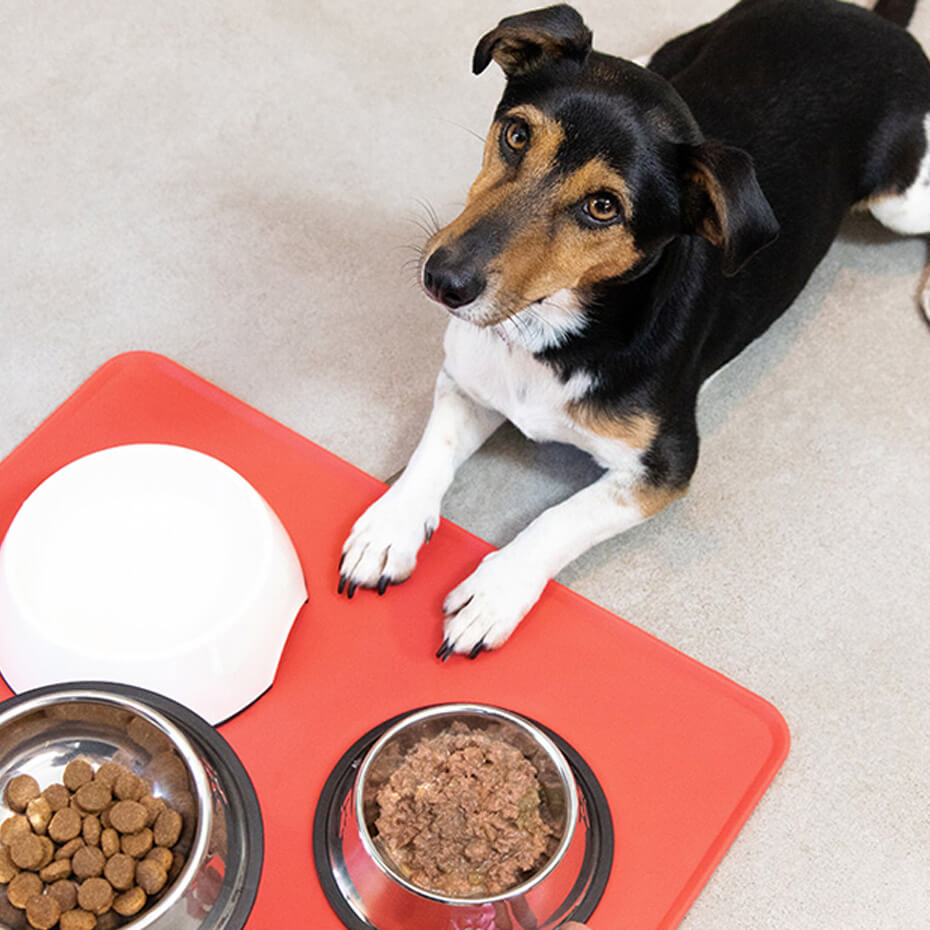
What Your Dog's Body Language Says About His Mood
It’s easy to interpret a dog’s behaviour the same way you might interpret a friend’s. But it’s important to remember that dogs and humans aren’t the same, and it’s worth getting to know the way dogs communicate.
FRIENDLY
You can tell a dog is in a friendly mood when his ears are relaxed, his tail is flat, with plenty of wagging, and he makes gentle eye contact.
FEARFUL
A fearful dog is usually crouching with his tail between his legs. He will also avoid looking you in the eye. He may roll over on his back or urinate while lying down. Be careful around a fearful dog, as he may bite if he feels threatened.
ASSERTIVE
If a dog’s ears and tail are standing up and he is staring intently, he is showing assertion. He may put his paws on another dog’s back or be pushy with the dog or with the owner.
AGGRESSIVE
If he stares and holds his tail motionless, growls, and holds his ears forward, he may be a threat. Watch out for this behaviour in a dog.
PLAYFUL
When a dog pushes his chest to the ground and holds his rear and tail in the air, he is trying to initiate play.

Is Your Dog Behaving Badly?
PULLING ON THE LEASH
When your dog is on his leash, ask him to heel, and then move forward while the leash is loose. If he pulls on the leash at all, stop right away and don’t move. When your dog turns to look back, call him back to heel position and start again. If he pulls on the leash, stop and repeat the process. Move forward only when the leash is loose.
GOING TO THE BATHROOM WHERE HE SHOULDN’T
If your dog is suddenly going where he shouldn’t, consult your veterinarian. He may have a health issue.
Even well trained dogs sometimes have accidents or go where they shouldn’t. Clean the area with a pet odour neutraliser so your dog won’t be tempted to repeat his mistake. Avoid making sudden changes in your dog’s diet and giving your dog late night snacks. Make sure he also spends enough time outdoors.
EXCESSIVE BARKING
There are many reasons why your dog might be barking – separation anxiety, loneliness, protecting his territory or even just inviting you to play. If you suspect that his barking is due to a larger problem you need to address that issue. Engage a dog behaviourist to identify the cause of his barking and teach you ways to improve it.
CHEWING AND DIGGING
If your dog chews on something that is off-limits, say “no” or “eh” in a low voice, then immediately give your dog a safe chew toy. Don’t use household items like old shoes, because they could encourage him to chew on new shoes as well.
During the summer months, if your dog digs a hole to cool himself, provide a cool location for him during the day in the shade. Make sure that fresh drinking water is always available to him. Ideally, a fence should fit tightly to the ground or be buried a few centimetres underneath it in order to prevent a dog crawling or digging out from under it. You can also provide a “digging area.” When your dog digs in this designated area, praise and reward him with attention or a treat. If your dog digs outside this area and is caught in the act, a firm “no” is usually enough of a deterrent.
RESOURCE GUARDING
First, evaluate how generalised the situation is. Is your dog always trying to protect resources, is he just protecting a specific toy, or is he acting this way only during mealtimes? If fights break out only around mealtime or when a certain toy comes out, a simple management solution may be the answer.
A suitable management option may be to feed the dogs in separate areas or rooms of your home. If tension occurs only when playing with a specific toy the dogs should enjoy their individual toys in separate areas and be reintroduced to one another only after the toys have been removed.
If the problem is more generalised, or if the intensity of the guarding behaviour is high, you may have to consult with a dog behaviour expert.

Attention Seeking Dogs
Dogs love to be with and please their owners, so it’s only natural that they should seek our attention. However, if yours goes a bit too far, you’ll need to know how to deal with it.
Inappropriate behaviour
Dogs often seek both our attention and affection. Intelligent or demanding dogs learn quickly how to get it, but sometimes it can all get a bit too much.
Many dogs learn to get our undivided attention through excessive barking, jumping up and pawing, biting the lead, stealing items, stereotypical behaviours such as tail-chasing, and even aggression.
In fact, inappropriate attention-seeking behaviour is a common assessment referred to behaviourists.
What to do
Dogs learn how to behave – and this learning only takes place when behaviour is reinforced in some way. It’s helpful if you can recognise the ways in which you reward out-of-control attention-seeking, even if you don’t know you’re doing it.
For example, your dog may bark when you’re on the phone. This annoying habit is often ignored, except for occasional reprimands to be quiet – which only rewards and reinforces the unwanted barking.
The barking continues because: a) it achieves results – your call is interrupted; and b) quiet behaviour is ignored and rarely rewarded for its own sake. By understanding the principles, it becomes easier to rectify the behaviour.

Basic training
In general, dogs should learn and practise the basic obedience exercises, especially the ‘Sit’, ‘Down’, ‘Stay’ and ‘Heel’ commands.
It’s also very important to be consistent. Dogs may be asked to ‘Sit’ before getting anything they want, whether it’s attention, petting, food or play to help teach them calm emotional restraint around people.
Lead control
Dogs that jump, leap and run out of reach should be kept on a lead any time a problem is anticipated. This is far better than trying to put the lead on after the bad behaviour has begun.
For example, if your dog jumps up on visitors, attach the lead before you open the door so you can control and correct the behaviour if necessary.
Stimulate your dog
Dogs that seek your attention a lot sometimes lack adequate physical and mental stimulation. Attention should be given little and often throughout the day, and when you don’t give any, get your dog used to the signs of being ignored (turn your back and avoid eye contact, touch, speaking, etc.). All contact with the dog must be initiated and ended by you.
Reward your dog!
Dogs learn quickly to behave if ‘good’ behaviour is rewarded and ‘bad’ behaviour is ignored.
If the problem still persists, ask your vet for assistance or for referral to a behavioural specialist – particularly if your dog gets aggressive.
With understanding, consistency and patience, you can soon teach your dog better manners and to be less dependent on you.











